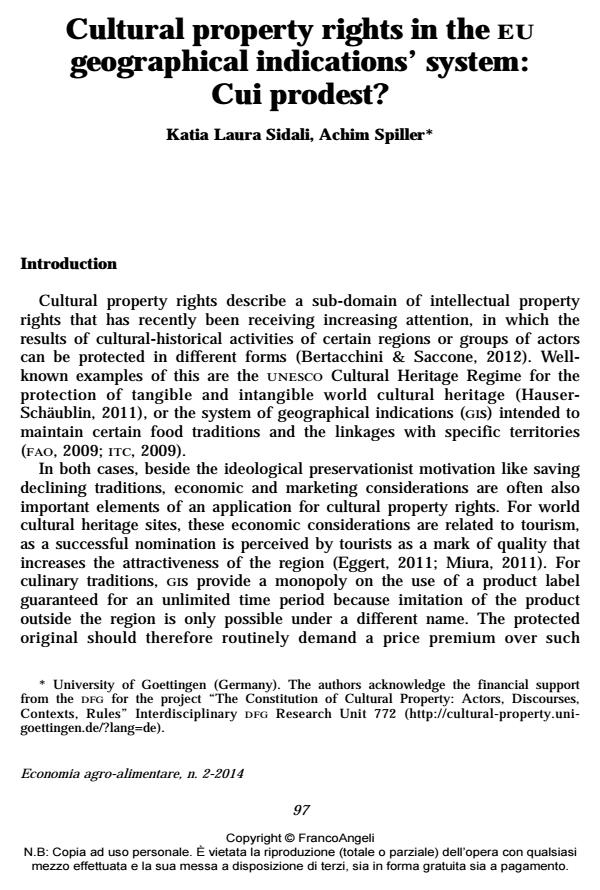Cultural property rights in the eu geographical indications’ system: Cui prodest?
Journal title ECONOMIA AGRO-ALIMENTARE
Author/s Katia Laura Sidali, Achim Spiller
Publishing Year 2014 Issue 2014/2
Language English Pages 8 P. 97-104 File size 44 KB
DOI 10.3280/ECAG2014-002006
DOI is like a bar code for intellectual property: to have more infomation
click here
Below, you can see the article first page
If you want to buy this article in PDF format, you can do it, following the instructions to buy download credits

FrancoAngeli is member of Publishers International Linking Association, Inc (PILA), a not-for-profit association which run the CrossRef service enabling links to and from online scholarly content.
This paper develops five theses to analyze the distribution of economic, social and environmental effects connected with the system of geographical indications (gis). The authors claim that the distribution of benefits for the agricultural sector largely differentiate among European countries (Thesis 1); non-organized outsiders in the region who do not financially support the common pool resource can profit particularly greatly from a gis system (Thesis 2); among gis consortia, those with a clear marketing leadership of a focal supplier profit whereas those with many small suppliers are easier to get pressed by dominant buyers (Thesis 3); the role of public authorities may represent a significant bias in the application phase (Thesis 4) and environmental benefits attached to the gis such as biodiversity preservation are largely overestimated (Thesis 5).
Keywords: Cultural property rights, eu system of geographical indications, pdo, pgi
Jel codes: D23, D18, D21, M31, P14
- New trends in the debate on geographical indications: evidence from Ecuador Katia L. Sidali, Nelson R. Granja Toledo, Alvaro Monteros Altamirano, Mirian Sanchez Fernandez, Maria del Rosario Mejía, Wilson Usina, in ECONOMIA AGRO-ALIMENTARE 1/2016 pp.39
DOI: 10.3280/ECAG2016-001003 - Kultur als Eigentum Sarah May, Katia Laura Sidali, Achim Spiller, Bernhard Tschofen, pp.31 (ISBN:9783863952044)
- Salsa, sauce, and other ingredients: nature, evolution and conservation of cultural heritage Edgardo I. Garrido-Pérez, Katia Laura Sidali, in ECONOMIA AGRO-ALIMENTARE 3/2014 pp.81
DOI: 10.3280/ECAG2014-003007
Katia Laura Sidali, Achim Spiller, Cultural property rights in the eu geographical indications’ system: Cui prodest? in "ECONOMIA AGRO-ALIMENTARE" 2/2014, pp 97-104, DOI: 10.3280/ECAG2014-002006